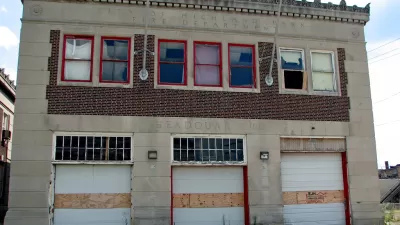The decline of Detroit can't be completely explained by the decline of the U.S. auto industry, according to an editorial commemorating the 50th anniversary of a five-day period of rioting and protest that resonates to this day.

Peter Saunders writes:
Fifty years ago today, the violent conflict that virtually defined Detroit finally began to wane, after five tension-filled days. Since that conflict Detroit has suffered immeasurably, far beyond what economic loss could do alone. Over the last decade or so, Detroit has finally become able to move on from the specter of the unrest. The city’s long era of ostracization is over, and it’s slowly reconnecting with the family of cities in America and around the world.
Saunders says the events of the summer of 1967 (depicted in the new movie Detroit, directed by Oscar winner Kathryn Bigelow) left a stigma on the city. The "shunning" of Detroit wasn't uncommon around the country.
The shunning suffered by Detroit and a handful of other cities that experienced similar unrest is often understood as “white flight”, but is indeed far deeper. White flight can describe many things. It can describe the aspirational lure of city residents seeking more space and comfort in greener suburban pastures. Yet it can also obscure more nefarious reasons for moving – motivated by fear of rising crime and falling property values. The former is a shining aspect of the American Dream; the latter can be viewed as an act of desperation and self-preservation.
The concept Saunders drives home to the reader is the aforementioned shunning, and the article includes a lot of evidence that describes the scope of the shunning's effects, along with calling out some of the ways that suburban leaders around Detroit enacted the shunning as official public policy. Though Saunders acknowledges that the shunning has ended, there is still a great deal of skepticism about the city's ongoing recovery.
FULL STORY: Detroit Emerges From The Shunning

Maui's Vacation Rental Debate Turns Ugly
Verbal attacks, misinformation campaigns and fistfights plague a high-stakes debate to convert thousands of vacation rentals into long-term housing.

Planetizen Federal Action Tracker
A weekly monitor of how Trump’s orders and actions are impacting planners and planning in America.

In Urban Planning, AI Prompting Could be the New Design Thinking
Creativity has long been key to great urban design. What if we see AI as our new creative partner?

King County Supportive Housing Program Offers Hope for Unhoused Residents
The county is taking a ‘Housing First’ approach that prioritizes getting people into housing, then offering wraparound supportive services.

Researchers Use AI to Get Clearer Picture of US Housing
Analysts are using artificial intelligence to supercharge their research by allowing them to comb through data faster. Though these AI tools can be error prone, they save time and housing researchers are optimistic about the future.

Making Shared Micromobility More Inclusive
Cities and shared mobility system operators can do more to include people with disabilities in planning and operations, per a new report.
Urban Design for Planners 1: Software Tools
This six-course series explores essential urban design concepts using open source software and equips planners with the tools they need to participate fully in the urban design process.
Planning for Universal Design
Learn the tools for implementing Universal Design in planning regulations.
planning NEXT
Appalachian Highlands Housing Partners
Gallatin County Department of Planning & Community Development
Mpact (founded as Rail~Volution)
City of Camden Redevelopment Agency
City of Astoria
City of Portland
City of Laramie





























